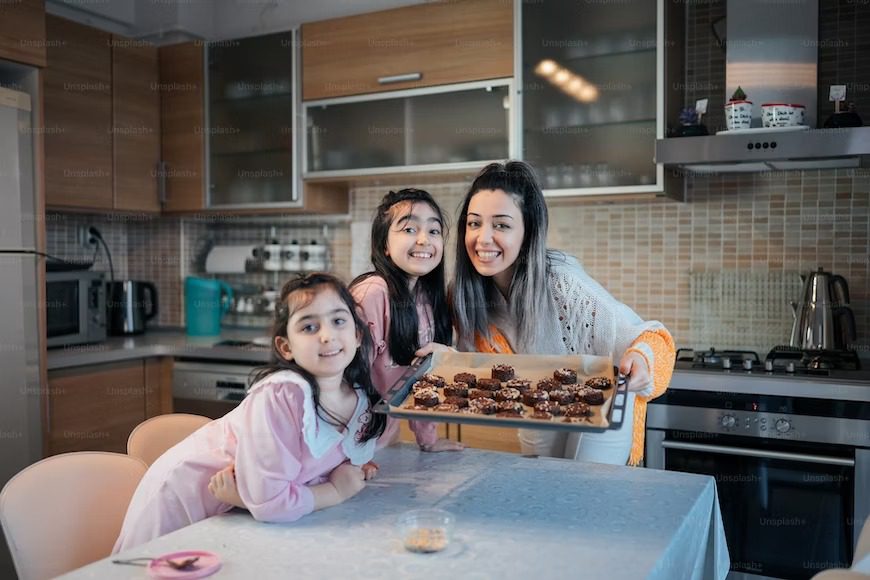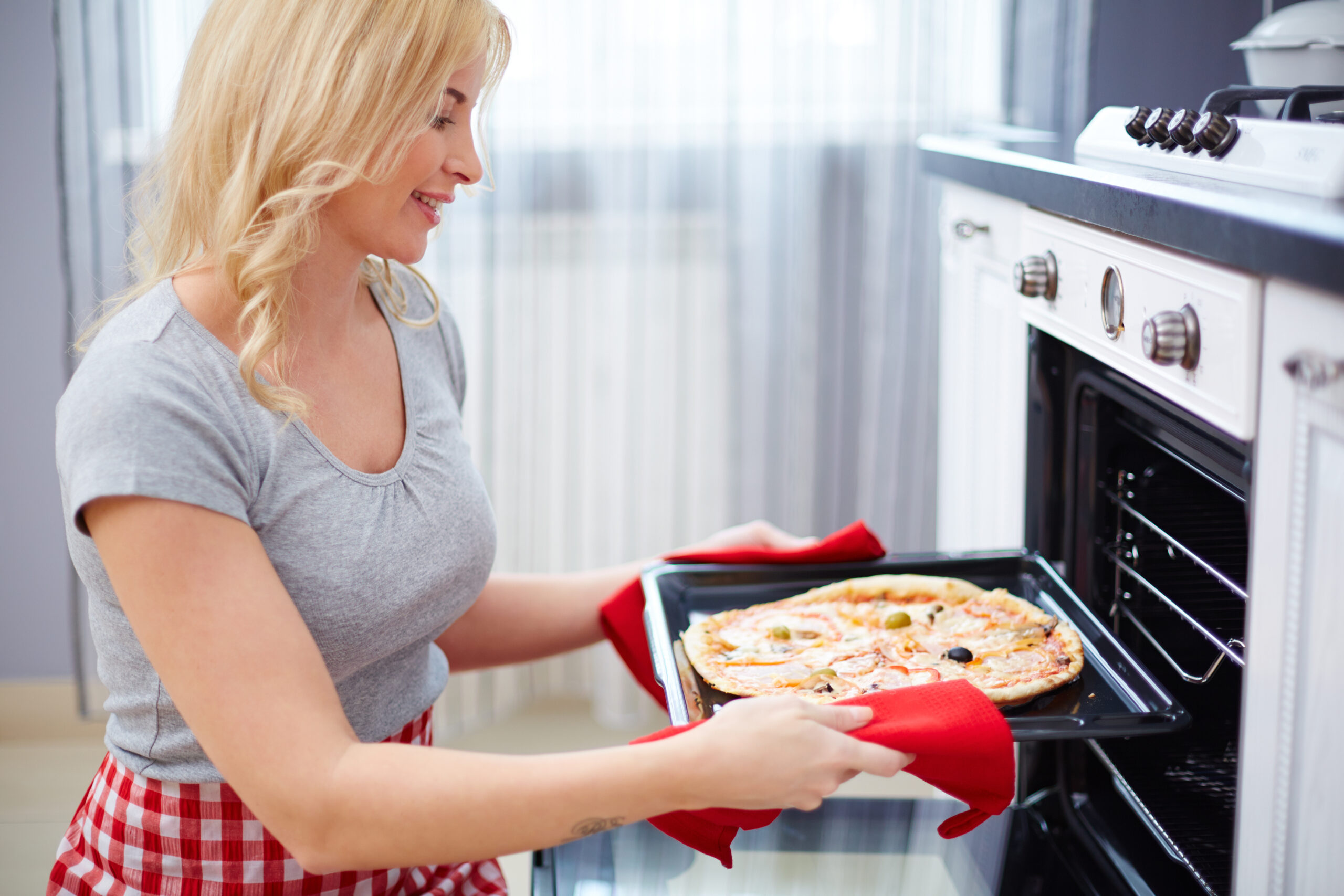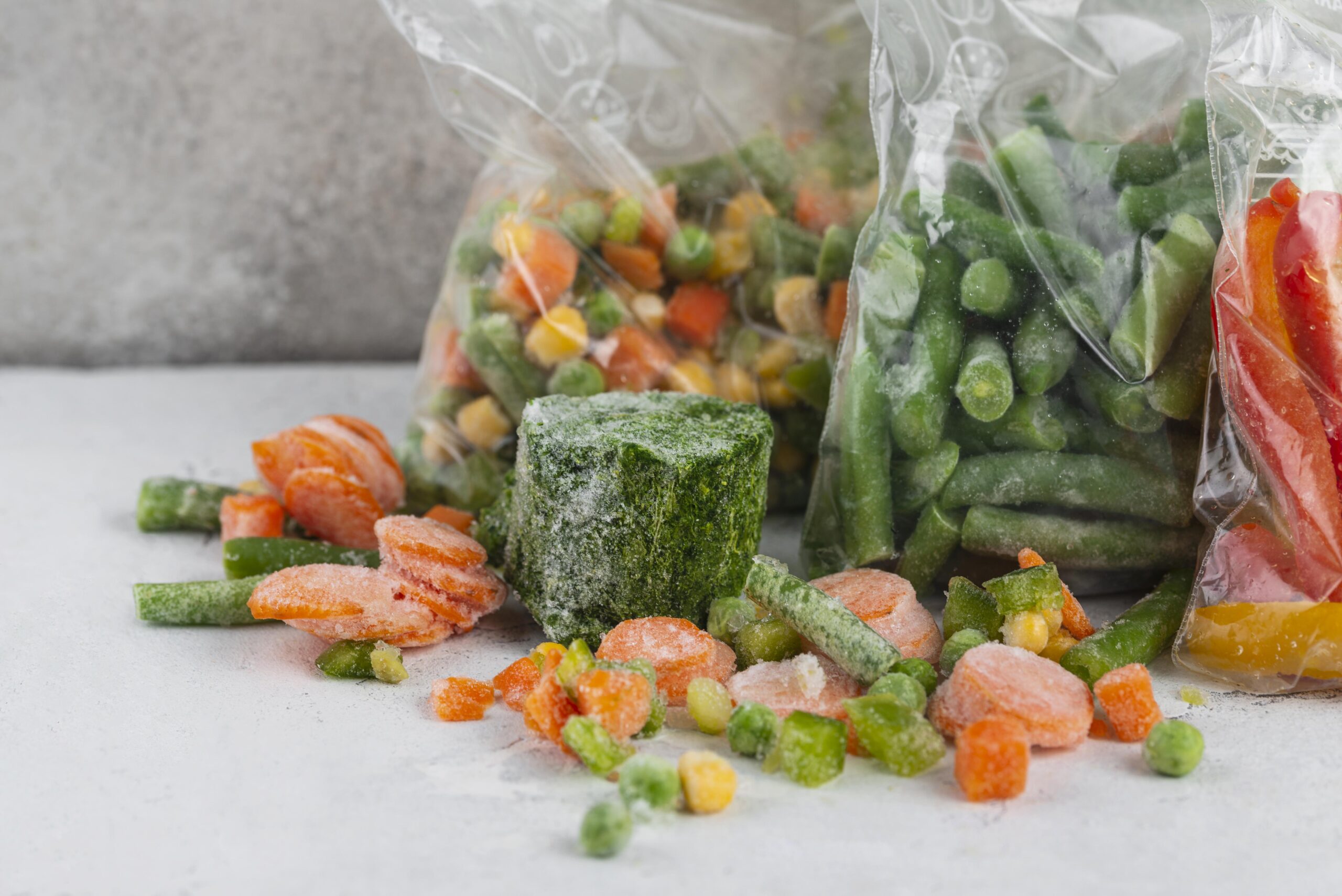Microwave Cooking Safety | Essential Tips and Precautions

Microwave ovens have become an essential appliance in most kitchens, making cooking and reheating food a breeze. They are fast, convenient, and save time, but are they safe to use? The truth is, improper use of microwave ovens can lead to dangerous hazards and risks. As a savvy home cook, it’s important to know the do’s and don’ts of microwave cooking safety to protect yourself and your loved ones from harm. In this article, we’ll explore the essential tips and tricks for safe microwave cooking, including choosing the right cookware, avoiding potential hazards, and preventing foodborne illnesses. So, let’s dive in and learn how to cook with confidence while keeping safety a top priority!
Read More: Reducing Kitchen Accidents| Keep You and Your Family Safe
Microwave Cooking Safety Precautions⚠️
Microwave ovens have become a staple in many households and are a popular choice for heating and cooking food quickly. However, it’s important to take safety precautions when using a microwave to avoid potential hazards and risks.
➠Never Operate an Empty Microwave
One of the most crucial safety precautions to remember when using a microwave is to never operate it when it’s empty. Microwaves are designed to heat food, and using them without anything inside can cause damage to the appliance and potentially start a fire.
➠Follow the Manufacturer’s Instructions
It’s important to always follow the manufacturer’s instructions when using a microwave. This includes guidelines for cooking times, wattage, and other safety precautions.
➠Use Microwave-Safe Cookware
When using a microwave, it’s important to use microwave-safe cookware. Avoid using metal, aluminum foil, or dishes with metallic trim as they can cause a fire or damage to the appliance. Instead, opt for microwave-safe glass, plastic, or ceramic containers.
➠Avoid Overheating Food
Overheating food in a microwave can cause burns or start a fire. It’s important to follow cooking times and power levels recommended by the manufacturer or recipe.
➠Stir and Rotate Food Frequently
Stirring and rotating food frequently in a microwave can help ensure even cooking and prevent hot spots. This is especially important when cooking or reheating large portions of food.
➠Beware of Hot Steam
When removing food from the microwave, be cautious of hot steam that may escape from the container. Steam can cause burns or scalds, so use oven mitts or a towel to handle hot containers.
➠Let Food Rest Before Consuming
Microwaved food can be extremely hot, even if the container or plate feels cool to the touch. Letting the food rest for a few minutes before consuming allows it to cool down and can prevent burns or scalds.
➠Keep Children Away While in Use
Children should never be left unattended near a microwave while it’s in use. In addition to the risk of burns or scalds, children may accidentally turn on the microwave or open the door while the appliance is running.
➠Use Caution When Reheating Certain Foods
Certain foods, such as eggs or foods with high water content, should be reheated with caution in a microwave. These foods can explode or splatter, causing burns or damage to the appliance. Cover these foods with a microwave-safe lid or paper towel to prevent splatters.
➠Check for Leaks and Damage Regularly
Regularly checking your microwave for leaks or damage can help ensure its safety. Make sure the door seals properly and that there are no cracks or other visible damage to the appliance.
By following these microwave cooking safety precautions, you can ensure that you and your loved ones can enjoy the convenience of microwave cooking without any risks or hazards.
Choosing Microwave-Safe Cookware

Microwave-safe cookware is designed to withstand the high temperatures and rapid temperature changes that occur during microwave cooking. Such cookware materials must be able to resist warping, cracking, or melting due to prolonged exposure to microwave radiation.
Avoiding Unsafe Cookware Materials
It’s crucial to avoid using unsafe cookware materials in the microwave, such as metal, aluminum foil, or dishes with metallic trim. These materials can cause sparks or fires, damage the microwave, or leach chemicals into the food.
Testing Cookware for Microwave Safety
If you’re unsure whether a particular dish is microwave-safe, you can perform a simple test to check its safety. Place the empty dish in the microwave with a cup of water beside it and run the microwave for one minute. If the dish becomes hot, it’s not microwave-safe.
Microwave-Safe Labels and Symbols
Many microwave-safe cookware products come with specific labels or symbols indicating their safety for use in a microwave oven. Look for labels that read “microwave-safe” or check for symbols that show a microwave with waves emanating from it. These labels and symbols are an indication that the cookware has been tested and approved for safe use in a microwave.
Quick Microwave Cooking Dos and Don’ts
it’s important to remember that there are some dos and don’ts when it comes to microwave cooking. Here, we’ll explore some essential tips for safe and effective microwave cooking.
➡️ Do’s:
✔Use microwave-safe cookware
✔Cover food with a microwave-safe lid or plastic wrap
✔Stir and rotate food frequently
✔Use lower power settings
✔Let food rest
➡️ Don’ts:
╳Use metal dishes or aluminum foil
╳Overheat food
╳Microwave certain foods, such as eggs or high water content foods, with caution
╳Operate an empty microwave
╳Use plastic containers that are not microwave-safe
Microwaving Frozen Food Safely

Here are some essential tips for microwaving frozen food safely.
1. Follow the instructions on the package:
Always follow the cooking instructions on the package when microwaving frozen food. These instructions are designed to ensure that the food is cooked evenly and at the right temperature.
2. Use a microwave-safe container:
When microwaving frozen food, use a microwave-safe container that is appropriate for the food you are cooking. Avoid using metal containers or dishes with metallic trim, as they can cause sparks or fires in the microwave.
3. Defrost food before cooking:
For best results, it’s recommended to defrost frozen food before cooking it in the microwave. This helps ensure that the food is cooked evenly and prevents cold spots.
4. Stir or rotate food frequently:
To ensure that frozen food is cooked evenly, stir or rotate it frequently while cooking. This helps distribute the heat and prevents hot spots.
5. Check the temperature:
Use a food thermometer to check the internal temperature of the food after cooking. The food should be heated to at least 165°F (74°C) to kill any bacteria or pathogens.
6. Let the food rest:
Let the food rest for a few minutes before eating it. This allows the heat to distribute evenly and also helps the food cool down to a safe temperature.
7. Avoid overcooking:
Overcooking frozen food in the microwave can cause it to become tough or rubbery. Follow the cooking instructions on the package and use a food thermometer to ensure that the food is cooked to the appropriate temperature.
8. Don’t refreeze thawed food:
Once you have thawed frozen food, do not refreeze it. This can increase the risk of foodborne illness and also affect the quality of the food.
9. Check for hot spots:
Before eating microwaved frozen food, check for hot spots by cutting it open or stirring it thoroughly. Hot spots can cause burns or scalds and can also indicate that the food is not cooked evenly.
Microwave Cooking and Nutrient Loss
Microwave cooking can cause nutrient loss in food due to the high temperatures and rapid heating. Here are some tips to minimize nutrient loss:
- When cooking vegetables in the microwave, use minimal water to help prevent nutrient loss.
- Covering food with a microwave-safe lid or plastic wrap can help retain moisture and nutrients.
- Using lower power settings can help prevent overheating and minimize nutrient loss.
Overcooking food in the microwave can cause nutrient loss. Follow the cooking instructions on the package and use a food thermometer to ensure that the food is cooked to the appropriate temperature.
Risks Associated with Microwave Cooking
↳Microwave Cooking and Foodborne Illnesses:
While microwave cooking is convenient and fast, it’s important to remember that it can also pose a risk of foodborne illnesses if not done correctly. Here are some essential tips to prevent foodborne illnesses when cooking in a microwave:
Use a thermometer: Use a food thermometer to ensure that food is cooked to the appropriate temperature. The USDA recommends cooking all meat, poultry, and eggs to an internal temperature of 165°F (74°C).
✔Rotate food: Rotate food frequently during cooking to ensure that it is heated evenly.
✔Let the food stand: Allow food to stand for a few minutes after cooking. This allows the heat to distribute evenly and can also help kill any remaining bacteria.
✔Follow package instructions: Follow the cooking instructions on the package to ensure that the food is cooked to the appropriate temperature.
↳Microwave Cooking and Chemical Changes in Food:
Microwave cooking can cause chemical changes in food due to high temperatures and rapid heating. Here are some things to keep in mind to minimize these changes:
✔Use microwave-safe cookware: Always use microwave-safe containers to prevent chemical changes in food.
✔Avoid overheating: Overheating food in the microwave can cause chemical changes and reduce the nutritional value of the food.
✔Use lower power settings: Using lower power settings can help prevent overheating and minimize chemical changes in food.
FAQs
Q: What are 4 disadvantages of microwave cooking?
A:
Uneven heating: Microwaves can sometimes heat food unevenly, resulting in hot spots and cold spots within the same dish.
Limited browning: Microwaves are not effective at browning or crisping food, which can be a disadvantage when you want a golden or crispy texture.
Loss of nutrients: Microwaving food can lead to a loss of certain nutrients, such as vitamin C, due to exposure to heat and the cooking process.
Limited cooking techniques: Microwaves are primarily used for reheating and quick cooking, so they may not be suitable for certain cooking techniques or recipes that require precise temperature control or longer cooking times.
Q: What are 5 disadvantages of using a microwave?
A:
Texture changes: Microwaving can sometimes result in changes in texture, making certain foods, like bread or pastries, become soggy or rubbery.
Limited cooking capacity: Microwaves have limited space, so cooking large quantities or large-sized dishes may be challenging.
Food splattering: Certain foods with high liquid content or sauces can splatter inside the microwave, creating a messy cleanup.
Lack of browning or caramelization: Microwaving cannot achieve the same level of browning or caramelization as traditional cooking methods, which may affect the flavor and appearance of some dishes.
Incompatibility with certain cookware: Microwaves require the use of microwave-safe cookware, limiting the options of cookware materials that can be used.
Q: What are 4 main rules to follow when microwaving food?
A:
Use microwave-safe containers: Ensure that the containers or dishes you use in the microwave are labeled as microwave-safe to prevent any potential hazards or damage to the cookware.
Stir or rotate food: To promote even cooking and heating, stir or rotate the food halfway through the cooking time to minimize hot spots and ensure consistent results.
Cover with a microwave-safe lid or wrap: Covering the food helps to retain moisture and prevent splattering while allowing for more even cooking.
Follow recommended cooking times and power levels: Pay attention to the suggested cooking times and power levels in the recipe or food packaging to achieve the desired results. Adjust as needed based on your microwave’s power.
Q: What are 3 tips for microwave safety?
A:
Avoid overheating liquids: When heating liquids in the microwave, use microwave-safe containers and take caution to prevent superheating, which can cause sudden eruptions or explosions. Stir liquids well and use appropriate containers to avoid overheating.
Be cautious of steam: When removing covers or wrappers from microwaved food, be careful of the steam that may escape, as it can cause burns. Open containers or wraps away from your face and hands.
Allow for standing time: After microwaving food, allow it to stand for a few moments before handling or consuming. This allows for more even heat distribution and reduces the risk of burns from hot spots.
Q: What are the weaknesses of a microwave?
- Limited browning and crisping capabilities.
- Uneven heating may result in hot spots and cold spots within the same dish.
- Certain textures may be adversely affected, leading to soggy or rubbery results.
- Microwaving may not be suitable for certain cooking techniques or recipes that require precise temperature control or longer cooking times.
Q: Which is safer, microwave or oven?
A:
Both microwaves and ovens can be used safely if used correctly and following proper guidelines. However, it’s important to note that microwaves heat food differently than ovens. Ovens provide a more traditional cooking experience, allowing for browning, caramelization, and a wider range of cooking techniques. On the other hand, microwaves excel at quick reheating and cooking, but they may not provide the same level of browning or texture as ovens. Ultimately, the safety of either appliance depends on responsible and cautious use by the individual.
Final Thoughts
Microwave cooking is a convenient and fast way to cook and reheat food, but it’s important to take necessary safety precautions to prevent any hazards or risks. Always use microwave-safe containers, follow the manufacturer’s instructions, and use a thermometer to check the internal temperature of the food. Remember to rotate and stir food frequently, check for hot spots, and let the food rest before consuming it. Additionally, keep in mind that microwave cooking can cause chemical changes in food and nutrient loss, so use lower power settings, minimal water, and cover food with a microwave-safe lid or plastic wrap. By following these general microwave cooking safety guidelines, you can ensure safe and healthy microwave cooking.


